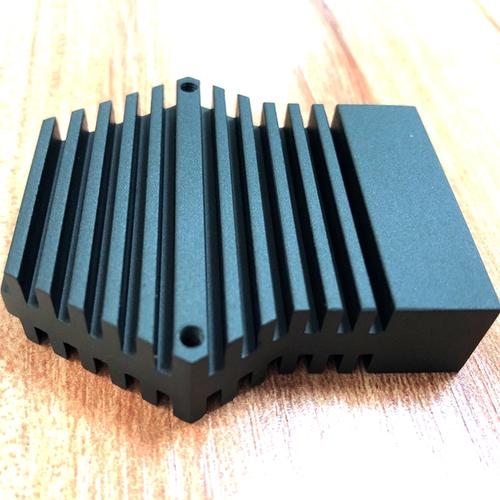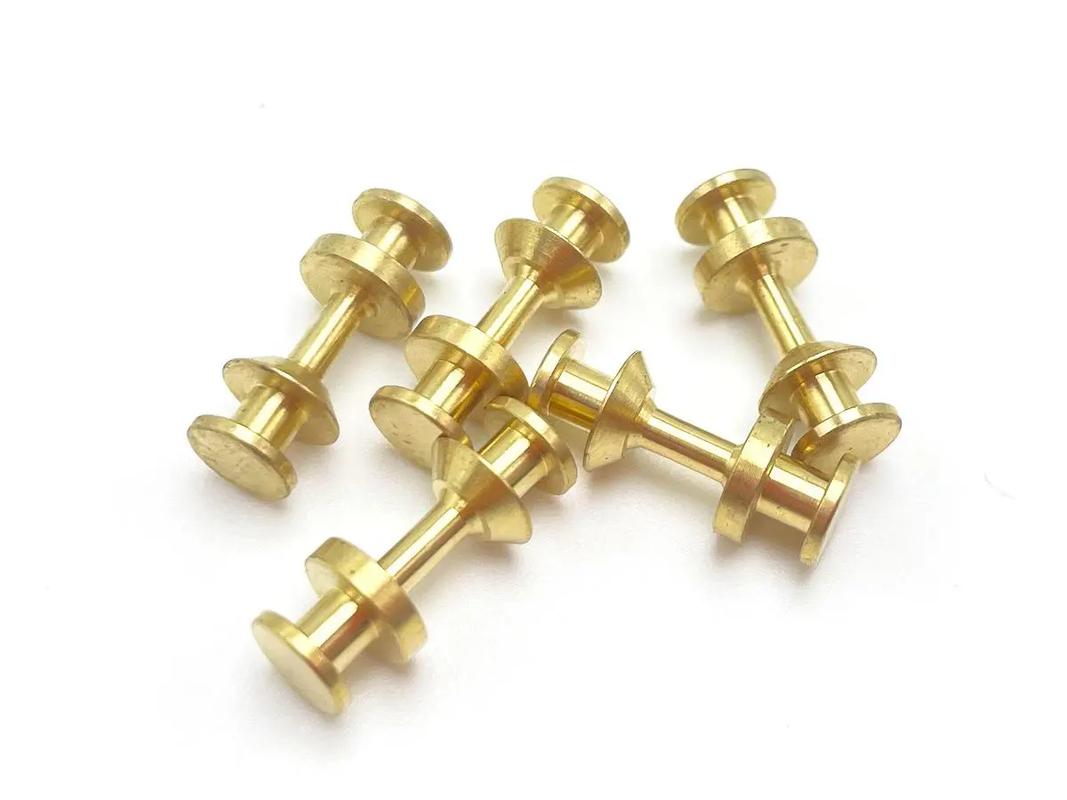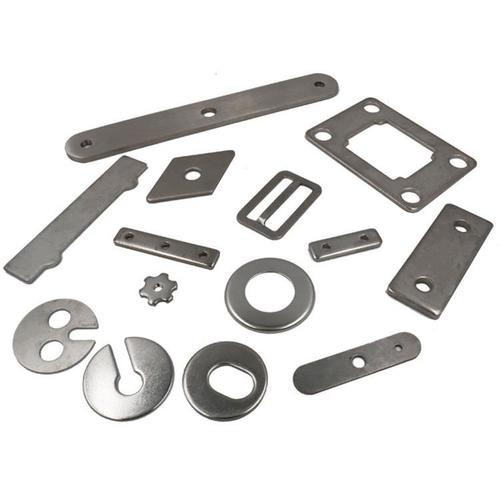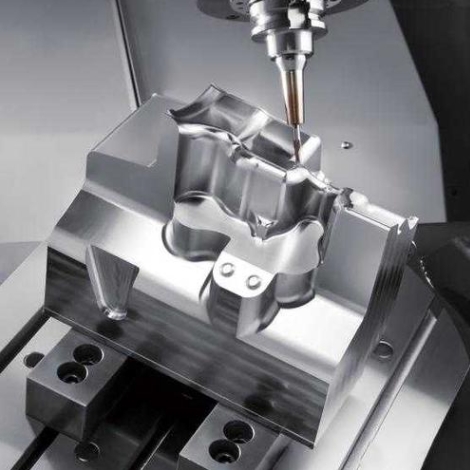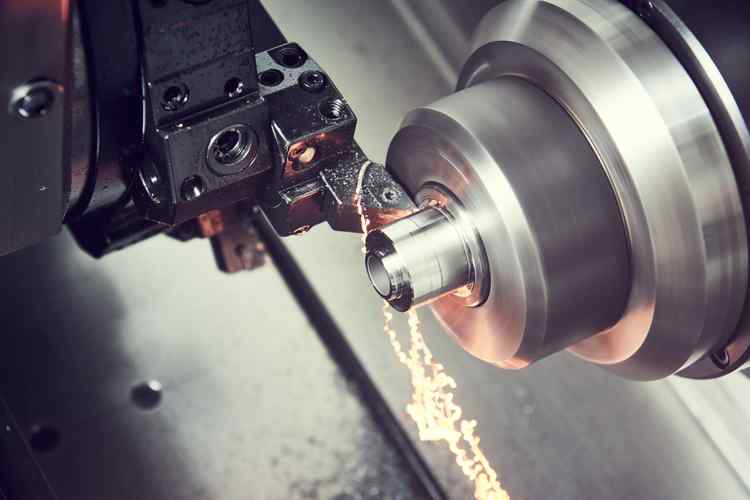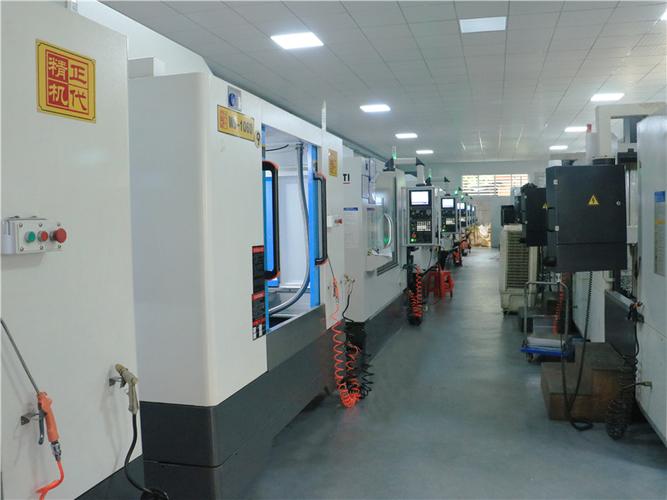Increasing CNC part hardness involves heat treatments (quenching, tempering), surface hardening (carburizing, nitriding), material selection (high-alloy steels, tool steels), and coating technologies (PVD/CVD). These methods enhance surface or bulk hardness, balancing wear resistance with toughness, tailored to materials like steel, aluminum, or titanium, for applications from tooling to aerospace components.
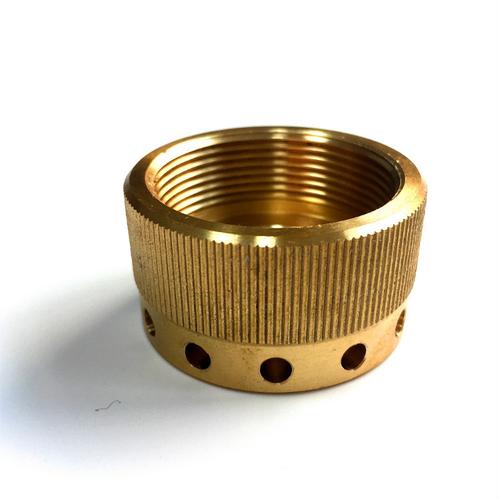
Detailed Analysis of Hardening CNC Parts
1. Core Hardening Technologies
Hardening methods vary by material and desired hardness distribution (surface vs. bulk):
-
Heat Treatment for Bulk Hardness:
- Quenching & Tempering: For carbon steels (e.g., 1045, 4140), heating to 800–900°C (austenitizing) dissolves carbon, followed by rapid cooling (water/oil quenching) to form martensite (hard but brittle). Tempering at 200–600°C reduces brittleness while retaining hardness (30–50 HRC for 4140, ideal for shafts/gears). Critical parameters: heating rate (5–10°C/min), hold time (30–60 mins per 25mm thickness), and cooling rate (water quenching achieves ~50 HRC vs. oil’s 45 HRC).
- Solution Annealing & Aging (Aluminum/Titanium): Aluminum alloys (6061, 7075) are heated to 460–500°C (solution annealing) to dissolve precipitates, then quenched and aged (120–180°C) to form fine precipitates, increasing hardness from 100–150 HV to 150–200 HV (7075 reaches 150–180 HRC-equivalent). Titanium alloys (Ti-6Al-4V) use β-annealing (800–900°C) followed by aging to boost hardness to 35–40 HRC.
-
Surface Hardening (Case Hardening):
- Carburizing: Low-carbon steels (1018) are heated in a carbon-rich atmosphere (900–950°C) to diffuse carbon into the surface (0.5–2mm depth), then quenched. Creates a hard surface (58–62 HRC) with a tough core (30–35 HRC), ideal for gears or shafts needing wear resistance and impact tolerance.
- Nitriding: Parts (alloy steels, stainless steels) are heated to 500–550°C in ammonia gas, forming nitride compounds (Fe₄N) on the surface. Achieves 60–70 HRC with minimal distortion—suitable for precision parts like CNC tool holders or aerospace fasteners, as it avoids high-temperature quenching.
- Carbonitriding: Combines carbon and nitrogen diffusion (820–880°C) for a 0.1–0.5mm hard layer (55–60 HRC). Used for small parts (e.g., bolts, pins) where thin, uniform hardness and low distortion are critical.
2. Hardening Process Workflow
Effective hardening requires controlled steps to avoid brittleness or deformation:
-
Pre-Treatment:
- Cleaning: Remove oils/coolants from CNC parts (ultrasonic cleaning with alkaline solutions) to prevent surface contamination during heating, which can cause uneven hardening.
- Stress Relief: For complex parts (e.g., gears with thin webs), pre-heat to 600–650°C for 1–2 hours to release machining stresses, reducing post-hardening warpage by 40–60%.
-
Hardening Operation:
- Quenching & Tempering (Steel):
- Heat 1045 steel to 840°C (austenitizing), hold 30 mins (for 25mm thickness), quench in water (cooling rate >50°C/sec) to form martensite (60 HRC).
- Temper at 350°C for 1 hour to reduce brittleness, achieving 35–40 HRC with balanced toughness—ideal for axles.
- Nitriding (Stainless Steel):
- Heat 420 stainless steel to 520°C, expose to ammonia gas for 20–40 hours. Nitrogen diffuses into the surface, forming chromium nitrides (65–70 HRC) with a 0.1–0.3mm case depth. No quenching avoids distortion, critical for precision molds.
- Quenching & Tempering (Steel):
-
Post-Treatment:
- Grinding/Polishing: Remove oxide scales from hardened surfaces (e.g., using 120-grit grinding wheels) to restore dimensional accuracy. For tight-tolerance parts (±0.01mm), post-hardening grinding corrects minor distortion.
- Inspection: Verify hardness with a Rockwell tester (HRC scale for steels, HV for aluminum). Check for cracks via dye penetrant testing—critical for high-stress parts like tooling inserts.
3. Material-Specific Hardening Strategies
Different materials require tailored methods to maximize hardness without compromising integrity:
-
Carbon Steels (1018, 1045):
- Low-carbon steels (1018, <0.2% C) rely on carburizing to achieve surface hardness (55–60 HRC) while keeping cores ductile (20–25 HRC)—used for gears, where surface wear resistance and core toughness are needed.
- Medium-carbon steels (1045, 0.45% C) use quenching + tempering for bulk hardness (30–45 HRC), suitable for shafts or structural parts.
-
Alloy Steels (4140, 4340):
- Chromium-molybdenum steels (4140) harden to 50–55 HRC via quenching (840°C, oil-cooled) + tempering (200°C). Added alloys (chromium, molybdenum) improve hardenability, ensuring uniform hardness in thick sections (50+mm)—ideal for aerospace landing gear components.
-
Tool Steels (D2, A2):
- High-carbon, high-chromium D2 steel is air-quenched (1010°C) to 60–62 HRC, with low-temperature tempering (150°C) for abrasion resistance. Used for CNC cutting tools, dies, and molds requiring long service life.
-
Non-Ferrous Metals:
- Aluminum Alloys (7075): Solution heat-treated at 475°C, water-quenched, then aged at 120°C for 24 hours. Precipitates (magnesium-zinc phases) boost hardness to 150–180 HV (vs. 80 HV in annealed state)—used for aerospace brackets.
- Titanium Alloys (Ti-6Al-4V): β-heat treatment (920°C, water-quenched) + aging (500°C) forms α+β phases, increasing hardness to 35–40 HRC—critical for high-strength, lightweight aerospace parts.
4. Hardness Requirements for Key Products
Part function dictates target hardness and hardening methods:
- Cutting Tools (End Mills, Drills): Require high bulk hardness (55–65 HRC) for wear resistance. D2 tool steel, hardened via air quenching + low-temperature tempering, ensures edges stay sharp during CNC machining of steel.
- Gears & Bearings: Need surface hardness (58–62 HRC) for wear and core toughness (30–35 HRC) for impact resistance. Carburized 1020 steel meets this via a 1mm hard case and ductile core.
- Aerospace Fasteners: Titanium (Ti-6Al-4V) parts use β-aging to reach 35 HRC, balancing strength (1,100 MPa) and weight—critical for fuel-efficient aircraft.
- Molds & Dies: Stainless steel molds (420) use nitriding to achieve 65 HRC surfaces, resisting plastic wear while maintaining precision (±0.005mm) for injection-molded parts.
5. Industry Applications & Hardening Needs
- Automotive: Transmission gears (1020 steel) undergo carburizing to 58 HRC surface hardness, with core toughness to withstand torque. Axles (4140 steel) use quenching + tempering for 35 HRC, resisting bending fatigue.
- Aerospace: Turbine blades (Inconel 718) use precipitation hardening (720°C aging) to reach 35 HRC, withstanding high temperatures (600°C+) and centrifugal forces.
- Tooling & Manufacturing: CNC machine tool guides (4340 steel) are induction-hardened to 55 HRC, reducing wear from sliding contact with workpieces.
- Medical Devices: Surgical instrument blades (440C stainless) are hardened to 55–58 HRC via quenching, ensuring sharpness during repeated use and sterilization.
6. Challenges & Mitigations
- Distortion: High-temperature quenching can warp thin parts (e.g., 1mm steel sheets). Use low-temperature processes like nitriding (500°C) or induction hardening (localized heating) to limit thermal stress.
- Brittleness: Over-hardening (e.g., untempered martensite in steel) causes cracking under impact. Control tempering temperature (e.g., 200–300°C for 4140) to balance hardness and toughness.
- Complex Geometries: Hard-to-reach areas (e.g., blind holes in gears) may harden unevenly. Use gas nitriding (uniform nitrogen diffusion) or localized induction heating for selective hardening.
- Non-Ferrous Limitations: Aluminum’s low melting point (660°C) prevents high-temperature quenching. Instead, use T6 aging (solution + artificial aging) to maximize hardness without melting.
By combining material-specific heat treatments, surface engineering, and precise process control, CNC parts achieve targeted hardness levels—optimizing wear resistance, strength, and durability for their intended applications.

